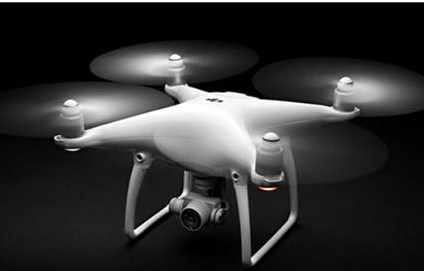Not many chips are needed on the flight control board of the quadcopter. The current toy-class aircrafts simply fly or stay in the air. As long as they can receive the commands sent by the remote control and control the four motors to drive the propeller wings, they can basically achieve the function of flying or hovering. According to a senior marketing engineer of STMicroelectronics, the main components of the UAV / multi-axis aircraft include flight control and remote control. Among them, flight control includes ESC / motor control, aircraft attitude control, and gimbal control. The current mainstream ESC control methods are mainly divided into BLDC square wave control and FOC sine wave control.

At CES, we saw Qualcomm and Intel show multi-axis aircraft with more functions. They use a CPU or ARM Cortex-A series processor that is more powerful than a microcontroller (MCU) as the main chip for flight control. For example, the Snapdragon Cargo drone displayed at Qualcomm CES is a flight controller developed based on the Qualcomm Snapdragon chip. It has functions such as wireless communication, sensor integration, and spatial positioning. Intel CEO Brian Krzanich also personally demonstrated their drones at CES. This drone uses "RealSense" technology, can build 3D maps and sense the surrounding environment, it can fly like a bat, can actively avoid obstacles. Intel ’s drones were developed in collaboration with a German industrial drone manufacturer Ascending Technologies, which built up to six Intel “RealSense†3D cameras and a PCI-based quad-core Intel Atom processor. Express customized card to handle real-time information of distance and sensors, and how to avoid obstacles at close range. The two companies are showing such powerful drones at CES. One is optimistic about the market of drones, and the other is that the United States is about to introduce relevant regulations, which will strictly control the flight of drones.
EMS / sensor of multi-axis UAVThe general manager of a drone solution provider believes that although most of the toy aircraft in the industry have been upgraded from three-axis to six-axis MEMS, they usually use the more commonly used price-sensitive models on consumer products such as tablets or mobile phones. . In professional aerial photography and mid-to-high-end drones specially developed for aeromodelling enthusiasts, more expensive sensors will be used to ensure a more stable and safe flight of drones. These MEMS sensors are mainly used to achieve smooth control and assisted navigation of the aircraft. The reason why the aircraft can hover and do aerial photography is because the MEMS sensor can detect the pitch and roll angle changes of the aircraft during the flight. After detecting the angle change, the motor can be controlled to rotate in the opposite direction to achieve stability. Effect. This is a typical closed-loop control system.
As for measuring angle changes with MEMS sensors, a combination sensor is generally selected, which cannot rely solely on accelerometers or gyroscopes, because each sensor has certain limitations. For example, the gyro output is angular velocity, and the angle can be obtained through integration. However, even in the zero input state, the gyro still has an output. Its output is a superposition of white noise and a slowly varying random function. In the process of integration, a cumulative error will inevitably be introduced. The longer the integration time, the greater the error. This requires an accelerometer to calibrate the gyroscope, because the accelerometer can use the force decomposition principle to determine the inclination angle by the component of gravity acceleration in different axial directions. Since there is no integration error, the accelerometer can correct the error of the gyroscope under relatively static conditions. However, in the state of motion, the credibility of the accelerometer output will decline, because it measures the combined force of gravity and external force. The more common algorithm is to use complementary filtering, combined with the accelerometer and gyroscope output to calculate the angle change.
ES811 is a 4G (Cat.M1& NB-IoT) GPS Tracker for vehicle. It reports location information via TCP/UDP with configurable intervals. ES811 has max 4 inputs which can be used to detect sensors and max 4 outputs to control fuel or the vehicle starter. It also has max 3 UARTs to connect an external device to transmit user data to a server. It can work in humid environment because of its waterproof design.
ES840 is OBD-II diagnostic interface. It supports all OBD-II protocols: SAE J1850 PWM, SAE J1850 VPW, ISO9141-2, ISO14230-4 (KWP2000), and ISO 15765-4.
4G Motorcycle GPS trackers,LTE Motorcycle GPS trackers,Cat-1 Motorcycle GPS Trackers,CAT-M Motorcycle GPS Trackers. Waterproof Motorcycle GPS Trackers,Wired Motorcycle GPS Trackers
eSky wireless Inc , https://www.eskygpsiot.com